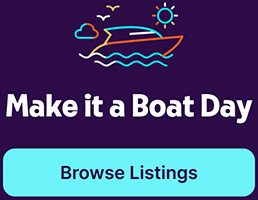Whether you're a seasoned sailor or a novice boater, knowing how to tie the right knot can make all the difference when you're out on the water. Anchor knots, in particular, are crucial for securing your vessel and ensuring a safe and enjoyable boating experience. In this guide, we'll explore some of the most essential anchor knots that every boater should know, along with step-by-step instructions on how to tie them.
The Importance of Anchor Knots
Anchor knots are more than just a means to secure your boat to a dock or anchor. They play a pivotal role in boating safety and can even impact the performance of your vessel. Let's delve into why these knots are so important.
Firstly, a well-tied anchor knot provides stability. When you're out on the water, the last thing you want is for your boat to drift away due to a poorly tied knot. A secure anchor knot ensures that your boat stays where you want it to, whether you're fishing, swimming, or simply enjoying the view.
Secondly, knowing how to tie an effective anchor knot can prevent damage to your boat. A loose or improperly tied knot can cause your boat to collide with other vessels or objects, leading to costly repairs. By mastering the art of anchor knots, you can avoid these potential mishaps.
Lastly, anchor knots are a fundamental part of boating knowledge. Just like understanding navigation or knowing how to operate your boat's equipment, being proficient in tying anchor knots is a skill that every boater should have in their arsenal.
Types of Anchor Knots
Now that we understand why anchor knots are so important, let's take a look at some of the most common types. Each of these knots has its own strengths and uses, so it's worth taking the time to learn them all.
The Bowline Knot
The bowline knot is one of the most versatile and commonly used knots in boating. Known for its strength and reliability, the bowline creates a fixed loop at the end of a rope that won't slip under load, making it ideal for securing your boat to an anchor.
To tie a bowline knot, follow these steps:
- Create a small loop (the "rabbit hole") in the rope.
- Bring the end of the rope (the "rabbit") up through the loop, around the standing part of the rope, and back down through the loop.
- Pull tight to secure the knot.
The Cleat Hitch
The cleat hitch is another essential knot for boaters. It's used to secure a rope to a cleat, a T-shaped piece of metal or plastic found on docks and boats. This knot is quick and easy to tie, making it perfect for docking.
Here's how to tie a cleat hitch:
- Wrap the rope around the base of the cleat, then make a figure-eight pattern over the top of the cleat.
- On the final pass, make a loop with the rope and pass it under the last wrap on the cleat.
- Pull the end of the rope tight to secure the knot.
The Anchor Bend
The anchor bend is a knot specifically designed for attaching a rope to an anchor. While it's a bit more complex than the bowline or cleat hitch, its strength and security make it a valuable knot to know.
To tie an anchor bend, follow these steps:
- Pass the end of the rope through the anchor's shackle twice.
- Wrap the end of the rope around the standing part and back through the loops you've just created.
- Finish the knot with a half hitch on the standing part of the rope for added security.
Practicing Your Knots
Knowing how to tie these knots is one thing, but being able to tie them quickly and correctly under pressure is another. That's why practice is so important. Here are a few tips to help you master these essential anchor knots.
First, start by practicing in a calm, controlled environment. Try tying the knots at home, where you can take your time and focus on getting them right. Once you're comfortable with the basics, you can start practicing in more challenging conditions.
Second, use a rope that's similar to the one you'll be using on your boat. This will help you get a feel for how the knots should look and feel when tied with a boating rope.
Finally, don't be discouraged if you don't get it right the first time. Tying knots is a skill that takes time to master, so be patient with yourself and keep practicing.
Conclusion
Anchor knots are an essential part of boating, providing stability, preventing damage, and contributing to your overall boating knowledge. By learning and practicing the bowline knot, cleat hitch, and anchor bend, you'll be well-equipped to handle any situation that comes your way on the water.
Remember, practice makes perfect. So grab a rope and start practicing these knots today. Before you know it, you'll be tying them like a pro and enjoying safer, more secure boating adventures.
Take Your Boating Business to the Next Level with Getmyboat
Now that you've mastered the essential anchor knots, it's time to turn your boating skills into a thriving business. With Getmyboat, you can list your boat for free and tap into a global audience eager to book a boat just like yours. Our suite of boat management tools simplifies attracting new customers, scheduling trips, and processing payments. Plus, with our Superowner program and featured listings, you'll gain even more exposure. Ready to expand your reach and maximize your earnings? List your boat today and set sail on a sea of business opportunities!






